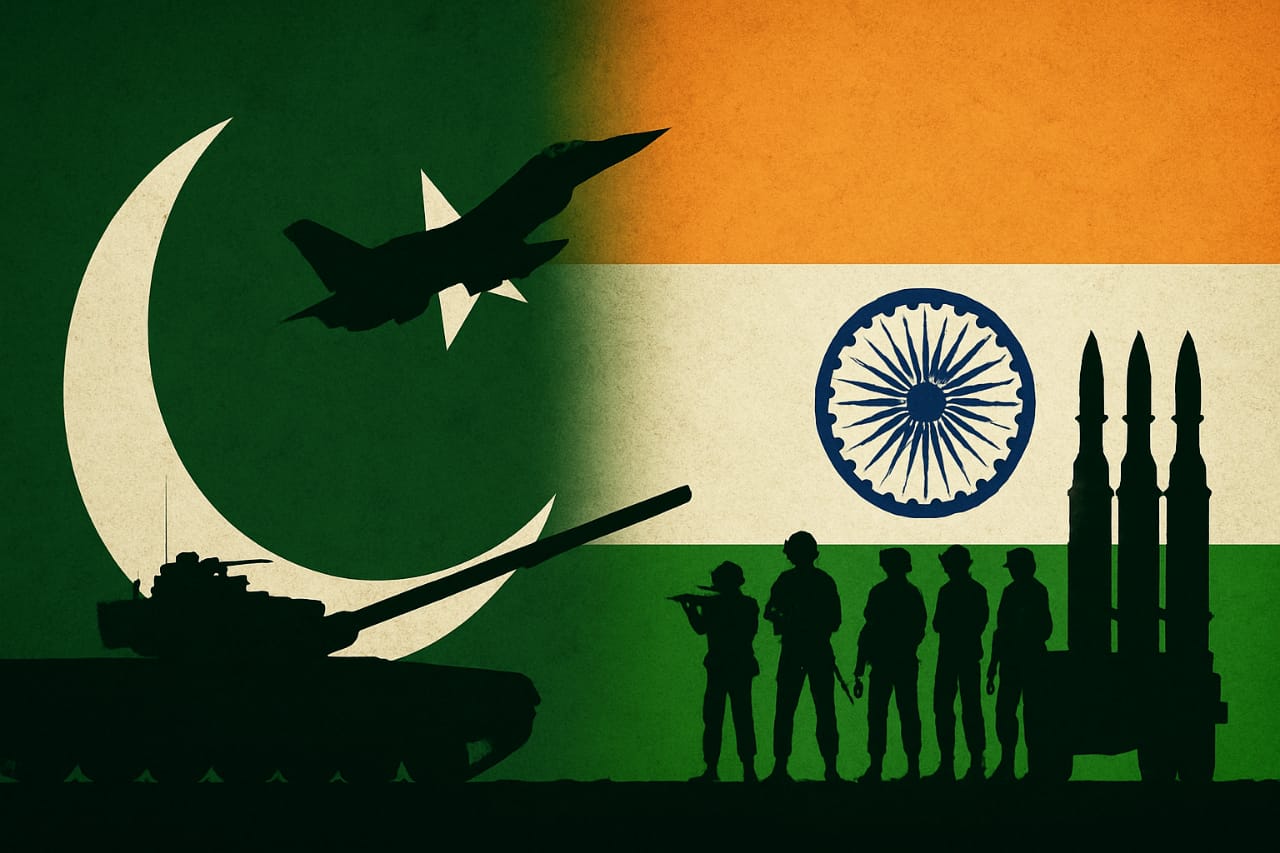How How Pakistan’s Strategic Supremacy Outmaneuvered Indian Military Capabilities

How-How-Pakistans-Strategic-Supremacy-Outmaneuvered-Indian-Military-Capabilities.
Despite the use of every possible instrument of warfare including conventional military capabilities like drones and missiles, weaponizing water and even using elements of disinformation and psy-ops, India still could not secure a triumph in the latest crisis with Pakistan. The attempts made by India to provoke the conflict were excessive starting from its typical blame game since the incident of Pahalgam in Indian-Administered Kashmir and based on these accusations ultimately showcasing its reckless aggression through airstrikes in the Pakistani territory targeting innocent civilians
. But the history had other plans. Pakistan’s armed forces retaliated by launching Operation Bunyaan-un-Marsoos and showed the world the importance of strategic tactics and courage against a huge and advanced military arsenal of India. Contrary to many expectations, the response from Pakistan in this intense war was strategic incorporating elements of smart military maneuvering and calculated escalation control.
Tracing back the origin of the recent crisis was an attack on the tourists in the Pahalgam region killing 26 people on April 22, 2025. Pakistan not only condemned the attack but also offered cooperation for the investigation. India was not ready to negotiate and despite the warnings from Pakistan, our aggressive neighbor launched airstrikes in the territory of Pakistan on the night of May 7th and 8th 2025 labeling these attacks as Operation Sindoor. In response, Pakistan shot down five Indian jets and one drone including three Rafale jets, one MiG-29, one SU plane, and one Heron combat drone.
This was the first time that French-made Rafale jets were shot down which caused a huge decline in their market internationally. In a bigger picture, the war was also labeled as a testing ground for the military hardware of China and France based on the use of their technologies by both sides which obviously showed the technological superiority of China. Moreover, According to DG ISPR, Pakistan destroyed a total of 77 drones. Again, on the morning of May 7th, 2025, India’s unchecked aggression could not stop till there and PAF bases in the areas of Rawalpindi, Chakwal, and Jhung were targeted by Indian air-to-surface ballistic missiles. These provocations from India were continuously escalating the conflict.
The dawn of May 10, 2025, witnessed a calculated, proportionate, and precise counterattack by the Pakistan military where all forces including the Pakistan Air Force (PAF), Navy, and Army stood united against the adversary. With the deployment of the Fatah-1 missile, Pakistan’s armed forces were successful in targeting multiple installations in Indian territory. These targets were mostly the air force bases located at Pathankot, Ambala, Mamun, Adampur, Bhatinda, Srinagar, Jammu, and many other major aviation bases were included. In addition, BrahMos storage facilities located at Beas and Nagrota which were used by India to target Pakistani territory were also destroyed. The radar station at Pooch and S-400 battery systems at Adampur were also targeted. Therefore, the efficient response by Pakistani armed forces was designed for a long-term impact rather than immediate battlefield gains and it served almost both of these purposes.
India has failed to not only achieve its political objectives behind the attacks but also faced a strategic failure. Framing Pakistan for the Pahalgam Attack and then ultimately showing aggression on this baseless claim in the form of attacking Pakistani territory was of course a stupid and politically motivated idea. Moreover, the failure of Indian media as an authentic news source became visible to many eyes. Bulks of disinformation were spread by Indian media that later on fueled anger among the Indian people. False claims, fabrication of narratives, and misreporting were at their peak. On the other hand, the operational readiness and organized airpower of the PAF displayed their capabilities and demonstrated how well they knew their enemy. India’s strategy which is outdated and consistently follows the same pattern for at least the last twenty-five years has been outmaneuvered by Pakistan’s armed forces and it has been proved that operational restraint and rationality are important features in a war. India adopted escalation dominance and tested Pakistan’s nuclear threshold but failed due to the response by Pakistan.
India once again tried to establish a new normal in South Asia after the Pulwama-Balakot crisis but had underestimated its neighbor’s capabilities due to Pakistan’s previous goodwill gesture of returning the Indian pilot Abhinandan in 2019. As a result, India’s bleeding nose is now the new normal, the destruction of Indian military and airbases is the new normal, and last but not least India’s approach and call for a ceasefire is the new normal that has established in the region. All in all, Pakistan’s armed forces have publicized to not only India but the whole world that it is not a nation that would forgive the adversary repeatedly for its insane and untamed behavior that challenges not only Pakistan’s security but also alters regional peace. On the other hand, India which previously faced questions about its vintage military after the Pulwama-Balakot crisis is now being questioned not only about its military capabilities but also about its deceptive and propagative Media on both domestic and international level as well.



